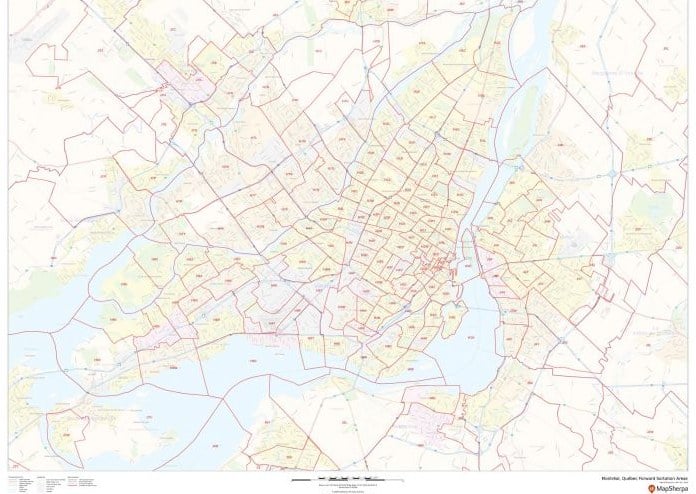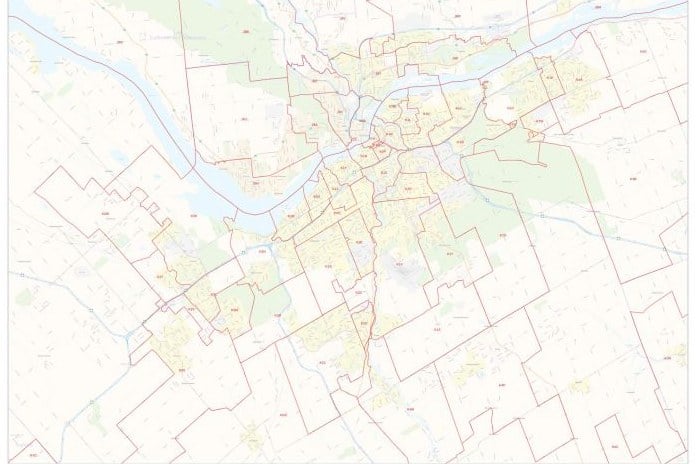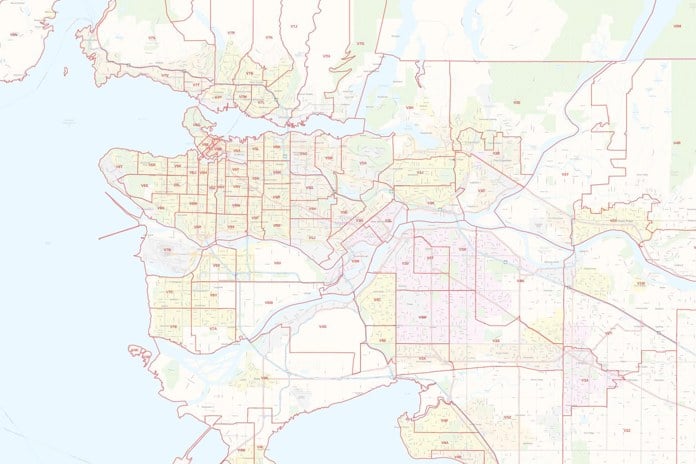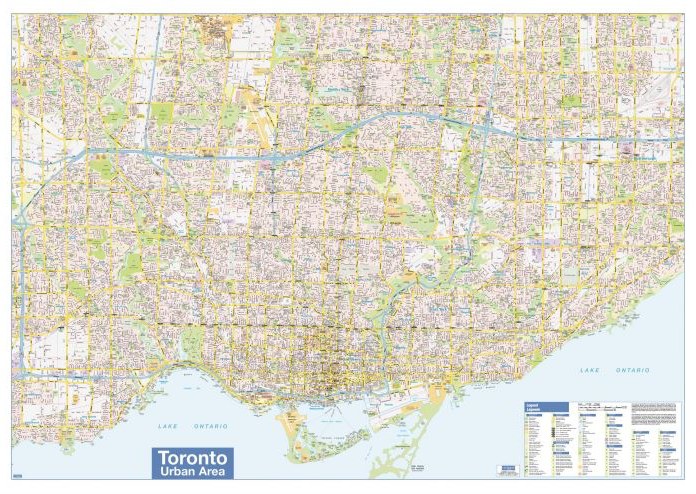Cities in Canada
Canada is categorized into provinces and territories which are further classified into cities and towns. The list of incorporated cities in Canada can be ascertained through its provinces.
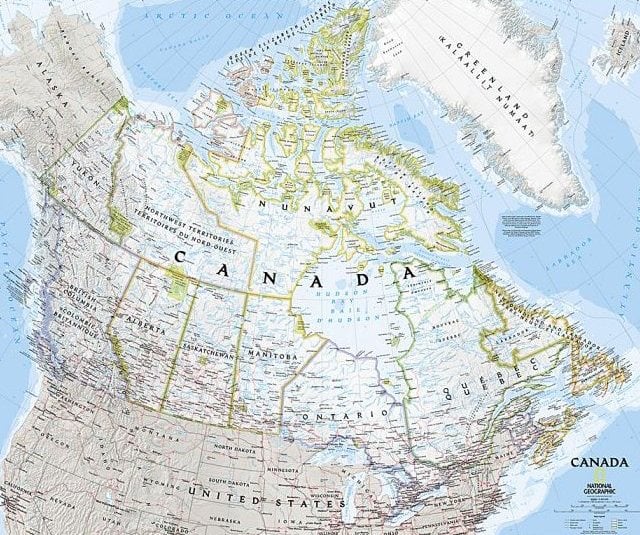
Alberta
Major cities in Alberta province of Canada are Edmonton, Calgary, Red Deer, Airdrie, Chestermere, Camrose, among others. A city is the highest form of all incorporated urban municipality statuses used in the Canadian Province of Alberta. Cities in Alberta were formed when communities with a population of at least 10,000 people applied to the Alberta Municipal Affairs for city status.
Alberta has 18 cities with a cumulative population of 2, 474, 510. The province’s largest and smallest cities are Calgary and Lacombe, with populations of 1,096,833 and 11,707, respectively. Chestermere became Alberta’s 18th city in January 2015.
- Calgary: Situated at the confluence of the Bow River and Elbow River in the south of the province. The population of the city is 1,239,220 as per 2016 Census, making it Alberta’s largest city and Canada’s third-largest municipality.
- Edmonton: The capital city of the Canadian province of Alberta in Edmonton. Situated on the North Saskatchewan River and is the center of the Edmonton Metropolitan Region, which is surrounded by Alberta’s central region. As per 2011 census, Edmonton had a population of 812,201 residents.
- Red Deer: It is a city in Central Alberta, Canada. Situated near the midpoint of the Calgary-Edmonton Corridor and is surrounded by Red Deer County. Considered as Alberta’s third-most-populous city – after Calgary and Edmonton. The 2016 Census of Population, Red Deer has recorded a population of 100,418 living in 39,982 dwellings.
- Airdrie: The Alberta City falls within the Calgary Region and is geographically located in the north of Calgary within the Calgary-Edmonton Corridor at the intersection of Queen Elizabeth II Highway and Highway 567. As per the 2017 municipal census, the population of Airdrie is 64,922.
- Chestermere: Originally named Chestermere Lake, the Canadian city is located in the Alberta province, within the Rocky View County. Largely a commuter town of Calgary, Chestermere surrounds the Chestermere Lake. As per the 2017 municipal census, the population of the city of Chestermere was counted 20,331.
- Camrose: This city is situated in central Alberta, Canada, amid some of the richest farmland in the prairies. Relatively a small city which originally grew up along a railroad and now grows along Highway 13.
British Columbia
Any population that exceeds 5,000 can be incorporated into a city, in British Columbia. Once so incorporated, a city does not lose this status even if its population later declines. British Columbia has 50 cities. Top 5 of them are mentioned herewith few details.
- Vancouver: Vancouver is a coastal seaport city in western Canada, located in the Lower Mainland region of British Columbia. With a population of 631,486, it is considered the most populous city in the province as per the 2016 census.
- Kelowna: The city on Okanagan Lake in the Okanagan Valley is situated in the southern interior of British Columbia, Canada. Kelowna has a population of 194, 882; the third-largest metropolitan area in the province, behind Vancouver and Victoria, and is the seventh-largest city in the province.
- Kamloops: This city in the south-central British Columbia, Canada, is situated at the confluence of the two branches of the Thompson River near Kamloops Lake. Ranked 37th on the list of the 100 largest metropolitan areas in Canada, Kamloops also represents the 44th largest census agglomeration nationwide.
- Coquitlam: This city in the Lower Mainland of British Columbia is primarily a suburban city and is also the sixth-largest city in the province. Coquitlam had a population of 139,284 in 2016. The city is among the 21 municipalities comprising Metro Vancouver.
- Burnaby: This British Columbia city is located immediately to the east of Vancouver. It is also the third-largest city in the Canadian province by population surpassing only by nearby Surrey and Vancouver.
Manitoba
Any community reaching a population of 7,500 can be given city status in Manitoba. It’s the newest city is Morden, which changed from town to city status on August 24, 2012. The Canadian province has 10 cities. 5 of them are mentioned here.
- Brandon: The second-largest city in the province of Manitoba, Canada is located in the southwestern corner of the province on the banks of the Assiniboine River. Brandon covers an area of 77.41 km2 and has a population of 48,859, while it’s census metropolitan area has a population of 58,003.
- Dauphin: The city in Manitoba, Canada, has a population of 8,457 as of the 2016 Canadian Census, with an additional 2,388 living in the surrounding Rural Municipality of Dauphin, for a total of 10,845 in the RM and City combined. It is Manitoba’s 9th largest community and serves as a hub to the province’s Parkland Region.
- Flin Flon: Known as the mining city of Canada, Flin Flon is located on a correction line in the boundary of Manitoba and Saskatchewan, with the majority of the city located within Manitoba. According to the 2016 census, the city’s population was recounted 5,185.
- Morden: Morden is a city located in the Pembina Valley region of southern Manitoba, Canada near the United States border. It is located about 11 km west of the neighboring city of Winkler. Morden had a population of 8,668 people in 2016, while 2017 census estimates the city’s population at 9,000.
- Selkirk: This city in the western Canadian province of Manitoba, is located on the Red River about 22 kilometers (14 mi) northeast of the provincial capital Winnipeg. As per the 2016 census, the population of 10,278 was calculated.
New Brunswick
The Canadian Province of New Brunswick has eight municipalities that hold city status. These eight cities had a cumulative population of 272, 174 and an average population of 34,022, as per the 2016 Census. The largest and smallest cities of New Brunswick are Moncton and Campbellton with populations of 71,889 and 7,385 respectively.
- Bathurst: The New Brunswick city has a population of 42,900. Bathurst is the county seat for Gloucester County, New Brunswick, and is at the estuary of the Nepisiguit River.
- Campbellton: Campbellton is a city with a population of 6,883 in Restigouche County, New Brunswick, Canada. It was officially incorporated in 1889 and achieved city status in 1958.
- Dieppe: This city in the Canadian maritime province of New Brunswick has a population of 25,384 in 2016, which makes it the fourth largest city in the province. The coastal community in the Arrondissement of Dieppe in the Seine-Maritime department in the Normandy region of northern France. The population stood at 35,670 in 2006.
- Edmundston: Edmundston is a city in Madawaska County, New Brunswick, Canada. The city has a population of 16,643 people in 2006. Located at the edge of the New Brunswick, nestled in the northeastern section of the Appalachian Mountains at the junction of Saint John and Madawaska RIvers in the northwestern part of the province.
- Fredericton: The city is the capital of the Canadian province of New Brunswick. The city is situated in the west-central portion of the province along the Saint John River, which flows west to east as it bisects the city.
Newfoundland and Labrador
Newfoundland and Labrador is the most easterly province of Canada. Situated in the country’s Atlantic region, it comprises the island of Newfoundland and mainland Labrador to the northwest. The province has three cities.
- Corner Brook: The Corner Brook city is located on the west coast on the island of Newfoundland and Labrador, Canada. Located on the Bay of Islands at the mouth of the Humber River, the city is the fifth-largest population center in the province behind St. John’s, and smallest of three cities behind St. John’s and Mount Pearl. The city has a population of 19,806.
- Mount Pearl: The second-largest city in Newfoundland and Labrador, Canada is located southwest of St. John’s, on the eastern tip of the Avalon Peninsula on the island of Newfoundland. The city has a population of 22, 957 as of Census 2016.
- St. John’s: Known as the capital and largest city of the Canadian province of Newfoundland and Labrador, St. John’s is located on the eastern tip of the Avalon Peninsula on the large Canadian island, Newfoundland. It is not only the capital but also the largest city by population of 108,860.
Northwest Territories
The only city in the Northwest Territories is Yellowknife. The Canadian territory is a federal territory of Canada. In 2011, a population of 41,462 was recounted in the province which also makes it the second-largest and the most populous of the three territories in Northern Canada.
- Yellowknife: Yellowknife is the capital and the only city, as well as the largest community, in the Northwest Territories, Canada. The city’s ethnically mixed population was calculated 19,569 in 2016.
Nova Scotia
Nova Scotia does not have incorporated cities, as they were amalgamated into regional municipalities in the 1990s. It is one of the three maritime provinces, and one of the four maritime provinces that form Atlantic Canada. Major cities in the Canadian province are Halifax, Cape Breton, Truro, Amherst, Yarmouth, and many others.
- Halifax: Halifax is the provincial capital and metropolitan area and formerly the largest city in Nova Scotia by population, now part of the Halifax Regional Municipality.
- Lunenburg: Lunenburg is a port town in Lunenburg County, Nova Scotia, Canada. The city is situated on the province’s South Shore, Lunenburg is located on the Fairhaven Peninsula at the western side of Mahone Bay. The 2016 Census of Population conducted by Statistics Canada recorded a population of 2,263.
- Truro: The central Nova Scotia town is the shire town of Colchester County and is located on the south side of the Salmon River floodplain. Truro’s population was recorded as 18,766 in the 2011 census.
- Amherst: The town in northwestern Cumberland County, Nova Scotia, Canada. Located at the northeast end of the Cumberland Basin, Amherst is strategically situated on the eastern boundary of the Tantramar Marshes 3 kilometers east of the interprovincial border with New Brunswick and southeast of the city of Moncton. The 2016 Census of Population recorded a population of 9,413.
- Yarmouth: Yarmouth is a port located on the Bay of Fundy in southwestern Nova Scotia, Canada. The shire town of Yarmouth County has the largest population center in the region. In the 2016 Census of Population conducted by Statistics Canada, Yarmouth town recorded a population of 6,518.
Nunavut
Nunavut is the second-least populous Canadian territory with 35,944 residents as of 2016. Nunavut’s 25 municipalities cover only 0.2% of the territory’s landmass but are home to 100% of its population. The city of Iqaluit is the territory’s capital.
- Iqaluit: Iqaluit is the capital of the Canadian territory of Nunavut; its largest community, and its only city. Until 1987, it was known as Frobisher Bay. As of the 2016 census, the population was 7,740, which is the lowest population of any capital city in Canada.
- Kugluktuk: Kugluktuk is a hamlet located at the mouth of the Coppermine River in the Kitikmeot Region of Nunavut, Canada, on Coronation Gulf, southwest of Victoria Island. It is the westernmost community in Nunavut, near the border with the Northwest Territories. A population of 1,491 was recorded for the city.
- Naujaat: The Canada hamlet is an Inuit hamlet located on the shores of Hudson Bay, in the Kivalliq Region of Nunavut, Canada. In the year 2016, a population of 1,082 was recorded in the region.
- Pangnirtung: The Inuit hamlet in the Qikiqtaaluk Region in Nunavut is located on Baffin Island. According to the 2016 census, the population of the hamlet was 1,481.
- Cape Dorset: Cape Dorset is an Inuit hamlet located on Dorset Island near Foxe Peninsula at the southern tip of Baffin Island in the Qikiqtaaluk Region of Nunavut, Canada. As per the 2016 census, the hamlet had a population of 1,411.
Ontario
In Ontario, city status is conferred by the provincial government, generally upon the request of the incorporated municipality. A municipality may apply for city status anytime after its population surpasses 10,000.
- Barrie: Barrie is a city, and manifesting regional center in Central Ontario, Canada. Positioned on the shores of Kempenfelt Bay, the western arm of Lake Simcoe, the city had a population of 141, 434 as per the Canada census 2016.
- Belleville: Belleville is a city located at the mouth of the Moira River on the Bay of Quinte in Southern (Central) Ontario, Canada, along the Quebec City- Windsor Corridor. It is the largest urban center in a much larger market area generally known as the Quinte Region.
- Brampton: Brampton is a Canadian city in Ontario’s Greater Toronto Area. The city has a population of 593,638 as of the Canada 2016 Census. Brampton is Canada’s ninth-most populous municipality, the seventy-seventh largest city in North America and the third-most populous city in the Greater Golden Horseshoe Region, behind Toronto and Mississauga.
- Brant: The Brant County is a single-tier municipality in the Canadian province of Ontario. Demographics of the county as per the Canada census is 36,707.
- Brantford: Brantford is a city in southwestern Ontario, Canada, founded on the Grand River. It is surrounded by Brant County but is politically separate with a municipal government of its own that is fully independent of the county’s municipal government.
Prince Edward Island
Prince Edward Island is the least populous province in Canada with 142,907 residents as per the 2016 census. The province’s 72 municipalities were home to 70% of its population in 2016. The island has two cities, Charlottetown and Summerside.
- Charlottetown: It is the capital and largest city of the Canadian province of Prince Edward Island, and the county seat of Queens County. Charlottetown was originally an unincorporated town that incorporated as a city in 1855. The population of Charlottetown in the 2016 census was 36,094.
- Summerside: Summerside in Prince Edward Island’s smallest city by population and area. It is the second-largest city in the province and the primary service center for the western part of the island.
Quebec
Predominantly the French-speaking province in eastern Canada with 2 vibrant cities in its south, connected by the Chemin du Roy highway along the Saint Lawrence River. Counted amongst one of the thirteen provinces and territories of Canada. In Quebec, the provincial law does not distinguish between towns and cities, however, it distinguishes between villages and municipalities.
- Acton Vale: The industrial town in south-central Quebec, Canada is the seat of the Regional County Municipality of Acton and is in the Montérégie administrative region. The population as of the Canada 2011 Census was 7,664. The town covers an area of 90.96 km².
- Barkmere: Barkmere is a vile in the Canadian province of Quebec, located in Les Laurentides Regional County Municipality. Known as one of the smallest incorporated municipalities in Quebec, with a population of just 58 in the Canada 2011 Census.
- Carignan: The suburban town in southwestern Quebec, Canada on the Richelieu River in the Regional County Municipality of La–Vallée-du-Richelieu, located about 27 km (17 mi) from Montreal. The population as of the Canada 2016 Census was 9,462. It was originally the Village Municipality of Chambly.
- Delson: The off-island suburb of Montreal, Quebec, Canada is situated 8 mi/13 km SSE of Montreal within the regional county municipality of Roussillon in the administrative region of Montérégie. The population as of the Canada 2011 Census was 7,462.
- Granby: A town in southwestern Quebec, located east of Montreal is Granby. With a population of about 63,433, it is the seat of La Haute-Yamaska Regional County Municipality. It is the fourth most populated town in Montérégie after Longueuil, Saint-Jean-sur-Richelieu, and Brossard.
Saskatchewan
In Saskatchewan, a town must have a population of 5,000 or more and meet other criteria in order to incorporate as a city, although in the early 20th century several centers such as Saskatoon and Regina were granted city status despite having a smaller population.
- Estevan: The eighth-largest city in Saskatchewan is approximately 16 km north of the Canada-United States border. The Souris River runs by the city, which is surrounded by the Rural Municipality of Estevan No. 5.
- Humboldt: The Saskatchewan city in Canada is located 113 km east of Saskatoon at the junction of Highway 5 and Highway 20. The city is surrounded by the Rural Municipality of Humboldt No. 370.
- Regina: The capital city of the Canadian province is the second-largest in the province, after Saskatoon, and a cultural and commercial center for southern Saskatchewan. Governed by Regina City Council, the city is surrounded by the Rural Municipality of Sherwood No. 159.
- Saskatoon: The largest city in Saskatchewan, that strads a bend in the South Saskatchewan River and located along the Trans-Canada Yellowhead Highway has served as the region’s cultural and economic hub since its foundation in 1882 as a Temperance colony.
- Yorkton: The city located in south-eastern Saskatchewan province is about 450 kilometers north-west of Winnipeg and 300 kilometers south-east of Saskatoon and is the sixth-largest in the province. Yorkton was founded in 1882 and incorporated as a city in 1928. It’s population in 2017 was 19,643.
Yukon
The only incorporated city in the Yukon territory is the smallest and westernmost of Canada’s three federal territories. Yukon has the smallest population of any province or territory in Canada, with a population of 35,874 people. Whitehorse is the territorial capital and Yukon’s only city.
- Whitehorse: Whitehorse, Dawson was also previously incorporated as a city, but its status was reduced to that of a town due to population. Through special provision, however, it is officially the town of the city of Dawson.
